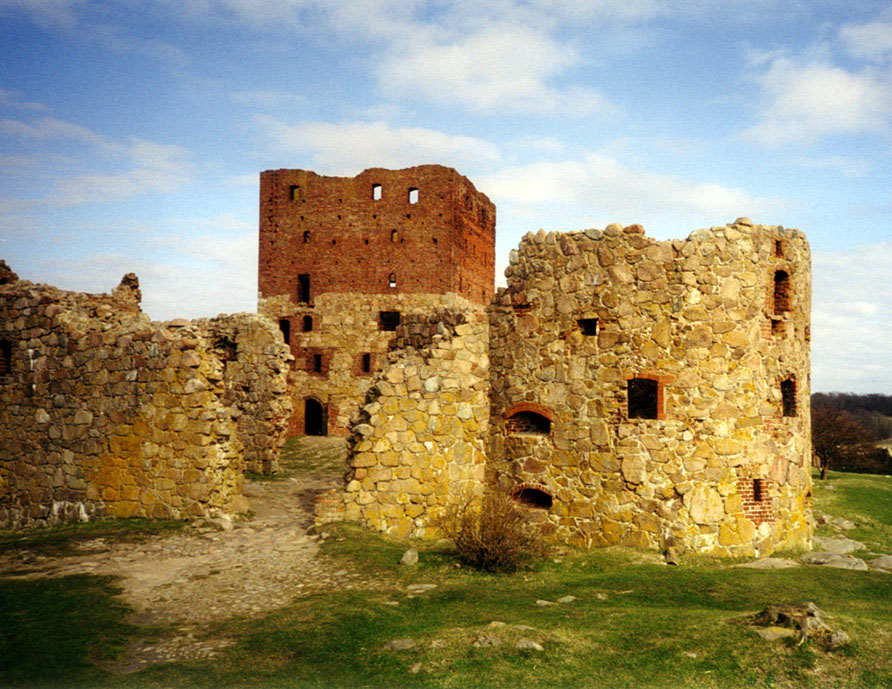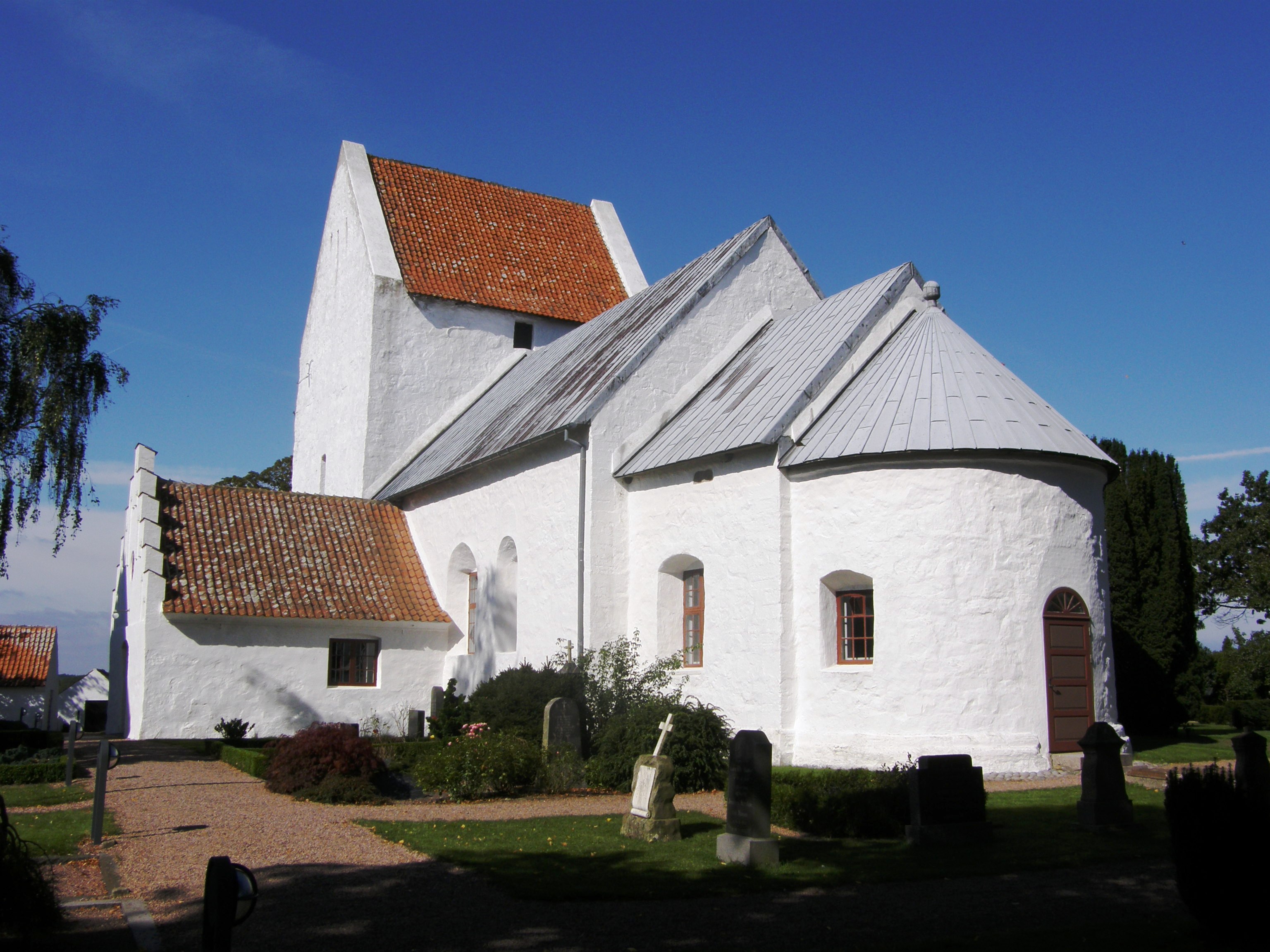|
Svaneke
Svaneke (''Swencke'' in 1410, from old Danish ''swan'' swan and ''*wīka'' inlet) is a small town on the eastern coast of the Baltic island of Bornholm, Denmark. It lies mainly in Svaneke parish and partly in Ibsker parish. It is Denmark's easternmost and until few years ago the smallest and now the second smallest (only Ærøskøbing is smaller) chartered town with a population of 1,079 as of 1 January 2022. History Svaneke probably dates back to the 13th century when herring fishing was practiced along Bornholm's east coast. The precise date at which it was granted the status of market town is not known but it was no doubt at the beginning of the 16th century as by 1543 it had a mayor and a municipal council."Danmarks Købstæder: Svaneke" Retrieved 7 May 2010. In 1610, almost hal ... [...More Info...] [...Related Items...] OR: [Wikipedia] [Google] [Baidu] |
Bechs Mølle
Bechs Mølle (Bech's Windmill) is a post mill located in Svaneke on the Danish island of Bornholm. Built in 1629, it is the oldest standing windmill in Denmark. In recent years, extensive restoration work has been carried out, preserving as far as possible the old structure and machinery. History Built in 1629, the post mill on Svaneke's Møllebakken is the oldest standing windmill in Denmark. In the 17th century, it was one of three mills on the northern fringe on Svaneke. David Wolfsen had the mill built and was the first owner. In 1737, a rich inhabitant of Svaneke, Jochum Thiesen, bought the mill, inscribing his and his wife's names on the main beam. After it had changed hands several times, Anders Hansen Kofoed from Nexø bought it in 1793 and in 1814 passed it on to his daughter and his son-in-law Hans Bentzen Bech, from whom the mill takes its name. His son, Peder Hansen Bech was the next to run the mill. It was he who from 1848 to 1860 built the house with a bakery which ... [...More Info...] [...Related Items...] OR: [Wikipedia] [Google] [Baidu] |
Svanemøllen
Svanemøllen (Swan Mill) is a wooden smock mill located just west of Svaneke on the Danish island of Bornholm. Built in 1857, it remained in service until the 1950s. Since 1960, it has been a listed building."Sag: Svanemøllen, Svaneke" ''Kulturarv''. Retrieved 6 November 2012. Background Over the years, Bornholm has had up to 30 smock mills built of wood and almost as many in masonry. Today four wooden and three masonry mills remain. Of the wooden mills, Svanemøllen is the only one to be listed. It is certainly the prize of the wooden mills, well built and well preserved. Its octagonal body is clad with oak shingles as is its cap.[...More Info...] [...Related Items...] OR: [Wikipedia] [Google] [Baidu] |
Bornholm
Bornholm () is a Danish island in the Baltic Sea, to the east of the rest of Denmark, south of Sweden, northeast of Germany and north of Poland. Strategically located, Bornholm has been fought over for centuries. It has usually been ruled by Denmark, but also by Sweden and by Lübeck. The ruin of Hammershus, at the northwestern tip of the island, is the largest medieval fortress in northern Europe, testament to the importance of its location. Bornholm and Ertholmene comprise the last remaining Danish territory in Skåneland east of Øresund, having been surrendered to Sweden in 1658, but regained by Denmark in 1660 after a local revolt. The island is known as ("sunshine island") because of its weather and ("rock island") because of its geology, which consists of granite, except along the southern coast. The heat from the summer is stored in the rock formations and the weather is quite warm until October. As a result of the climate, a local variety of the common fig, known ... [...More Info...] [...Related Items...] OR: [Wikipedia] [Google] [Baidu] |
Jørn Utzon
Jørn Oberg Utzon, , Hon. FAIA (; 9 April 191829 November 2008) was a Danish architect. He was most notable for designing the Sydney Opera House in Australia, completed in 1973. When it was declared a World Heritage Site on 28 June 2007, Utzon became only the second person to have received such recognition for one of his works during his lifetime, after Oscar Niemeyer. Other noteworthy works include Bagsværd Church near Copenhagen and the National Assembly Building in Kuwait. He also made important contributions to housing design, especially with his Kingo Houses near Helsingør. Utzon attended the Royal Danish Academy of Fine Arts (1937–42) and was influenced early on by Gunnar Asplund and Alvar Aalto. Early life and career Utzon was born in Copenhagen, the son of a naval architect, and grew up in Aalborg, Denmark, where he became interested in ships and a possible naval career. As a result of his family's interest in art, from 1937 he attended the Royal Danish Academ ... [...More Info...] [...Related Items...] OR: [Wikipedia] [Google] [Baidu] |
Østermarie
Østermarie is a village on the Danish island of Bornholm, west of Svaneke. Founded ca. 1880, its old church ('' Østermarie Church''), now a ruin, dates back to the 12th century."Østermarie" Frede Kjøllers Bornholm. Retrieved 18 May 2010. The population as of 1 January 2022 is 461. History Although St Mary's Church (''Sct. Maria Kirke'') was built in the second half of the 12th century, today's village has its origins around 1880 when the first dwellings were built. As the village became more prosperous, a new church was built in 1891. A house named Godthåb (1883) served as the local post office. Godthåb, used on the post-office stamp, was the first official name of the locality. When the railway station was opened in 1916, the name was changed to Østermarie.[...More Info...] [...Related Items...] OR: [Wikipedia] [Google] [Baidu] |
Post Mill
The post mill is the earliest type of European windmill. Its defining feature is that the whole body of the mill that houses the machinery is mounted on a single vertical post, around which it can be turned to bring the sails into the wind. All post mills have an arm projecting from them on the side opposite the sails and reaching down to near ground level. With some, as at Saxtead Green, the arm carries a fantail to turn the mill automatically. With the others the arm serves to rotate the mill into the wind by hand. The earliest post mills in England are thought to have been built in the 12th century. The earliest working post mill in England still used today is to be found at Outwood, Surrey. It was built in 1665. The earliest remaining example of a non-operational mill can be found in Great Gransden in Cambridgeshire, built in 1612.Windmills in Huntingdon and Peterborough. p. 3. Their design and usage peaked in the 18th and 19th centuries and then declined after the introdu ... [...More Info...] [...Related Items...] OR: [Wikipedia] [Google] [Baidu] |
Joboland
Brandesgårdshaven, also known as Joboland, is an amusement park with gardens, a zoo and a playground located west of Svaneke on the Danish island of Bornholm. History The area was once a well-run farm which can be traced back to the 16th century. Around the beginning of the 20th century, beautifully laid out gardens became a status symbol for Danish farmers. In 1904, Emil Ipsen (1882-1961), who kept up with the times, modernized the farm, cultivated plants on the banks of the stream known as Vaseåen and in 1910 dammed it up, providing the means of generating electricity for himself and his neighbours. The dam also created the pretty lake with its rowing boats. Originally it was used by Ipsen's children. He built a pedal boat for them as well as a play house in the middle of the lake."Brændesgårdshaven", Familien Anker & Bi ... [...More Info...] [...Related Items...] OR: [Wikipedia] [Google] [Baidu] |
St Ib's Church
St. Ib's Church (''Sankt Ibs Kirke'' or Ibsker), 3 km south-west of Svaneke on the Danish island of Bornholm, is a fine 12th century Romanesque building. The altarpiece was painted by Christoffer Wilhelm Eckersberg in 1846.Ibs Kirche på Bornholm ''Bornholmerguiden.dk'' Retrieved 29 June 2011 The Renaissance pulpit (ca 1600) was decorated by Paul Høm in 1964 with ceramics of the four evangelists.Sankt Ibs Kirke (Bornholm) ''Den store Danske'' Retrieved 29 June 2011. Etymology The churc ...[...More Info...] [...Related Items...] OR: [Wikipedia] [Google] [Baidu] |
Baltic Sea
The Baltic Sea is an arm of the Atlantic Ocean that is enclosed by Denmark, Estonia, Finland, Germany, Latvia, Lithuania, Poland, Russia, Sweden and the North and Central European Plain. The sea stretches from 53°N to 66°N latitude and from 10°E to 30°E longitude. A marginal sea of the Atlantic, with limited water exchange between the two water bodies, the Baltic Sea drains through the Danish Straits into the Kattegat by way of the Øresund, Great Belt and Little Belt. It includes the Gulf of Bothnia, the Bay of Bothnia, the Gulf of Finland, the Gulf of Riga and the Bay of Gdańsk. The " Baltic Proper" is bordered on its northern edge, at latitude 60°N, by Åland and the Gulf of Bothnia, on its northeastern edge by the Gulf of Finland, on its eastern edge by the Gulf of Riga, and in the west by the Swedish part of the southern Scandinavian Peninsula. The Baltic Sea is connected by artificial waterways to the White Sea via the White Sea–Baltic Canal and to the German ... [...More Info...] [...Related Items...] OR: [Wikipedia] [Google] [Baidu] |
Listed Building
In the United Kingdom, a listed building or listed structure is one that has been placed on one of the four statutory lists maintained by Historic England in England, Historic Environment Scotland in Scotland, in Wales, and the Northern Ireland Environment Agency in Northern Ireland. The term has also been used in the Republic of Ireland, where buildings are protected under the Planning and Development Act 2000. The statutory term in Ireland is " protected structure". A listed building may not be demolished, extended, or altered without special permission from the local planning authority, which typically consults the relevant central government agency, particularly for significant alterations to the more notable listed buildings. In England and Wales, a national amenity society must be notified of any work to a listed building which involves any element of demolition. Exemption from secular listed building control is provided for some buildings in current use for worship, ... [...More Info...] [...Related Items...] OR: [Wikipedia] [Google] [Baidu] |
Regions Of Denmark
The five Regions of Denmark ( da, regioner) were created as administrative entities at a level above the municipalities and below the central government in the public sector as part of the 2007 Danish Municipal Reform, when the 13 counties ('' amter'') were abolished. At the same time, the number of municipalities ('' kommuner'') was cut from 270 to 98. The reform was approved and made into a law by the lawmakers in the Folketing 26 June 2005 with elections to the 98 municipalities and 5 regions being held Tuesday 15 November 2005. Each region is governed by a popularly elected regional council with 41 members, from whom the regional chairperson is chosen. The main responsibility of the regions is healthcare. Lesser powers of the regions include public transport, environmental planning, soil pollution management and some coordination of secondary education. In contrast to the former counties (1970–2006), the regions do not have municipal powers. Regions cannot levy taxes, ... [...More Info...] [...Related Items...] OR: [Wikipedia] [Google] [Baidu] |
.jpg)
.jpg)






